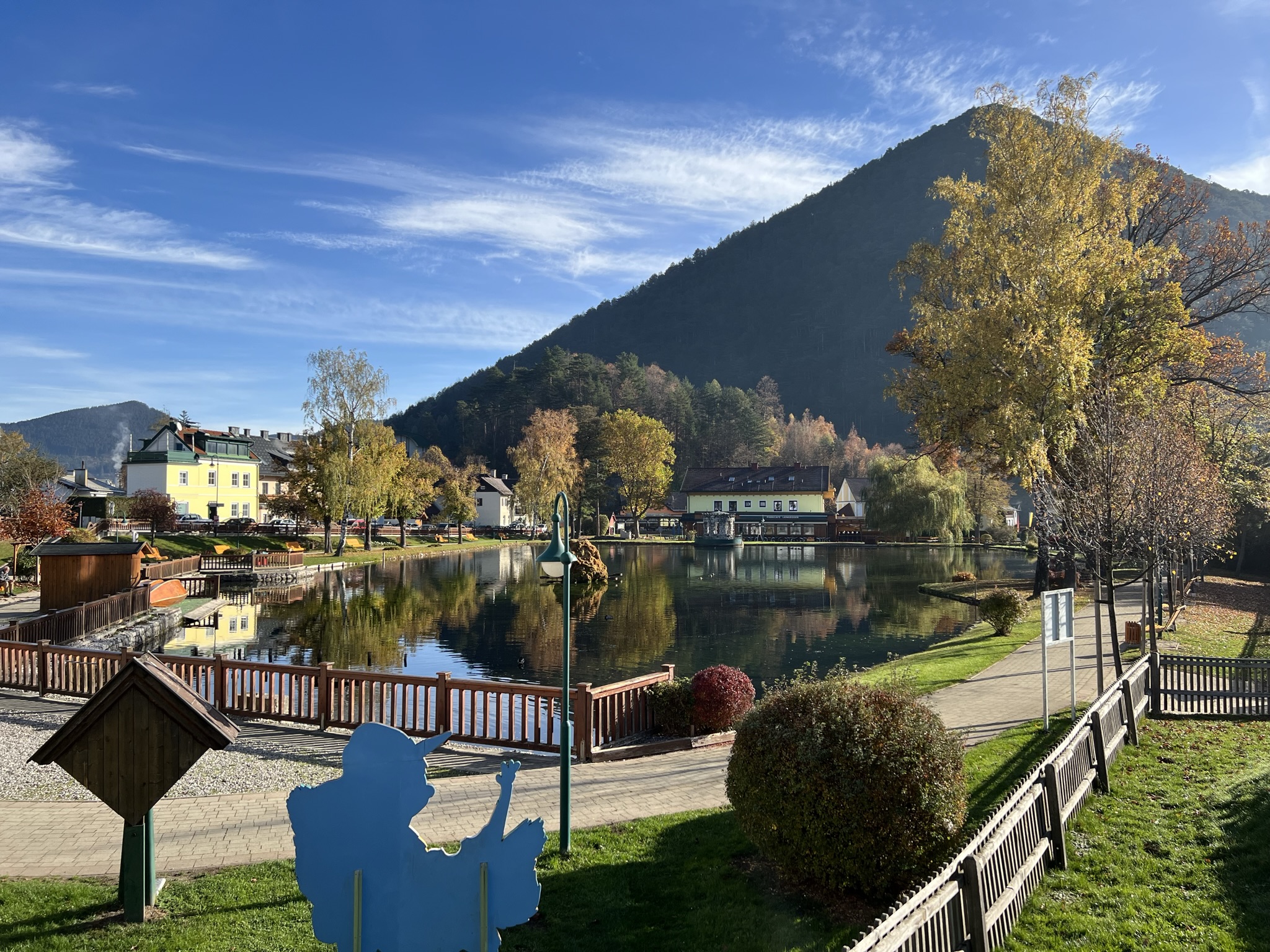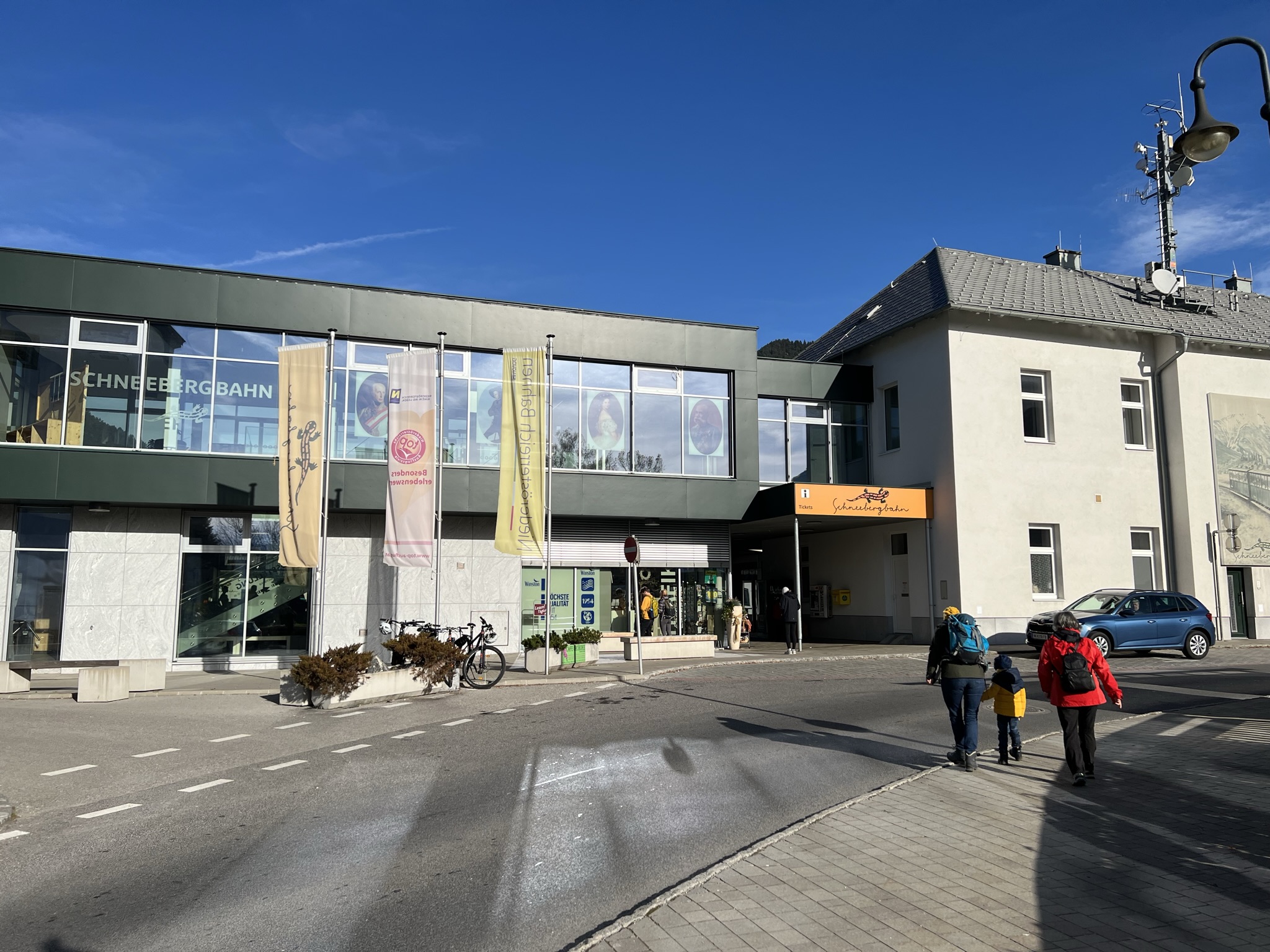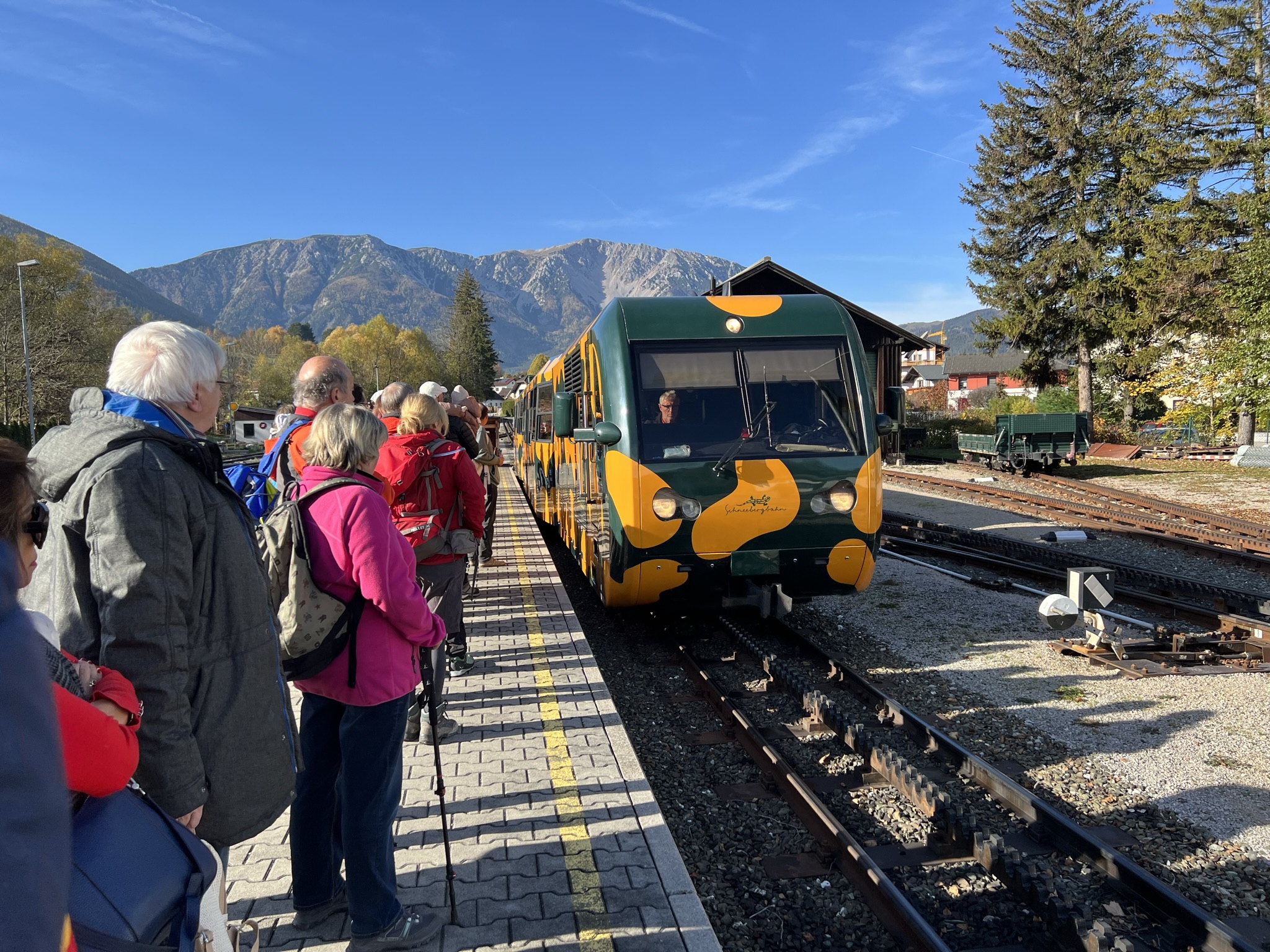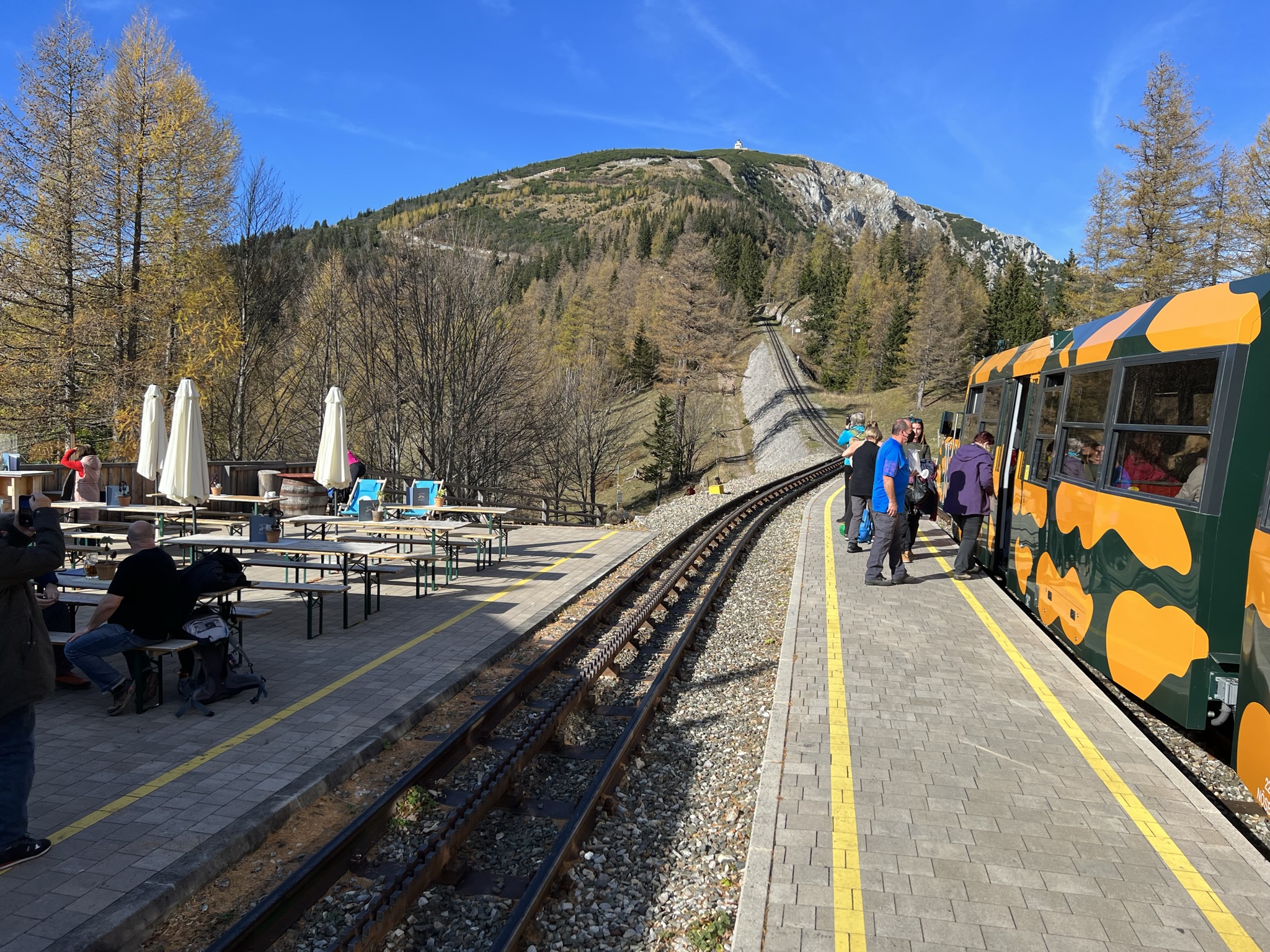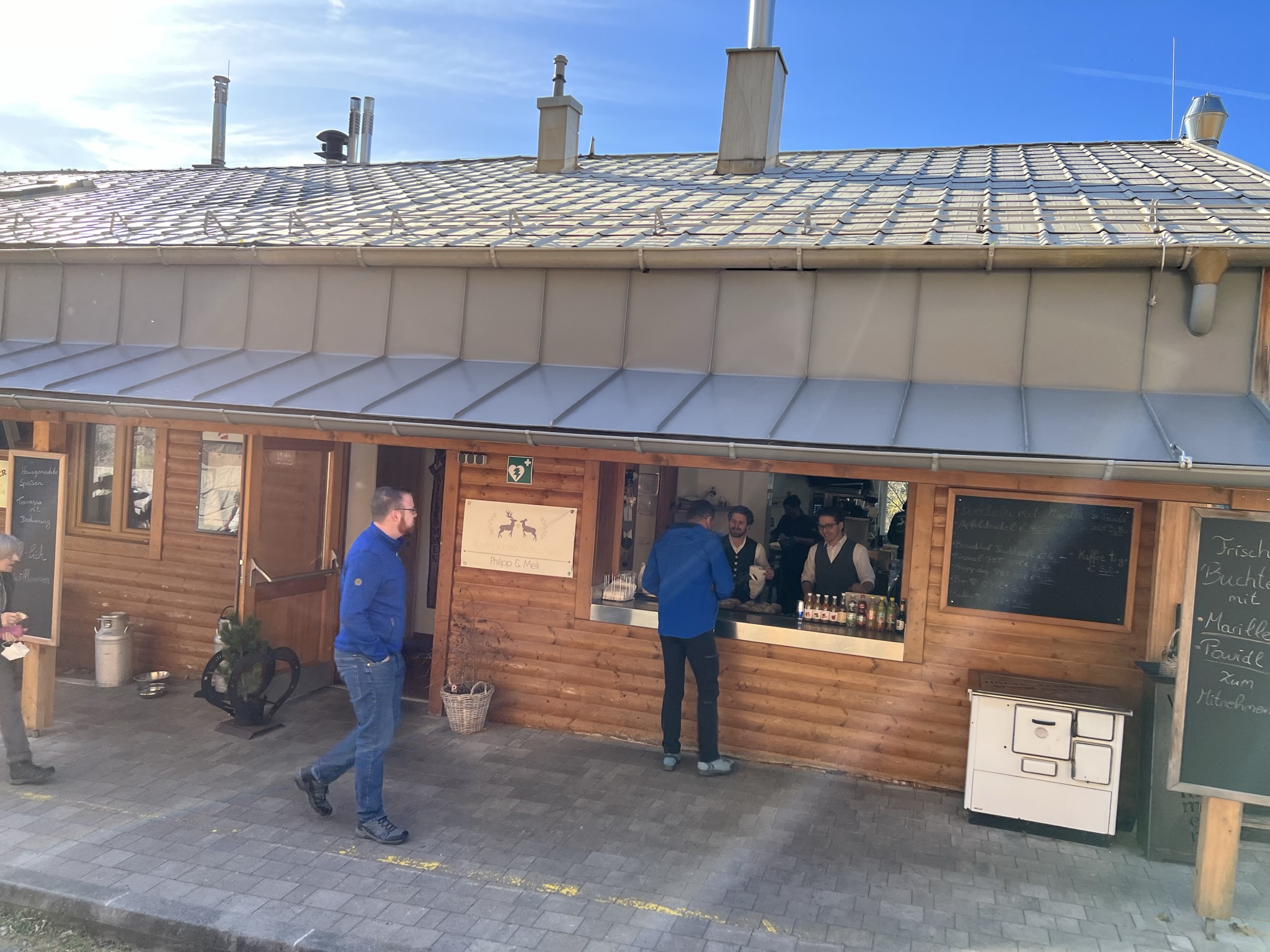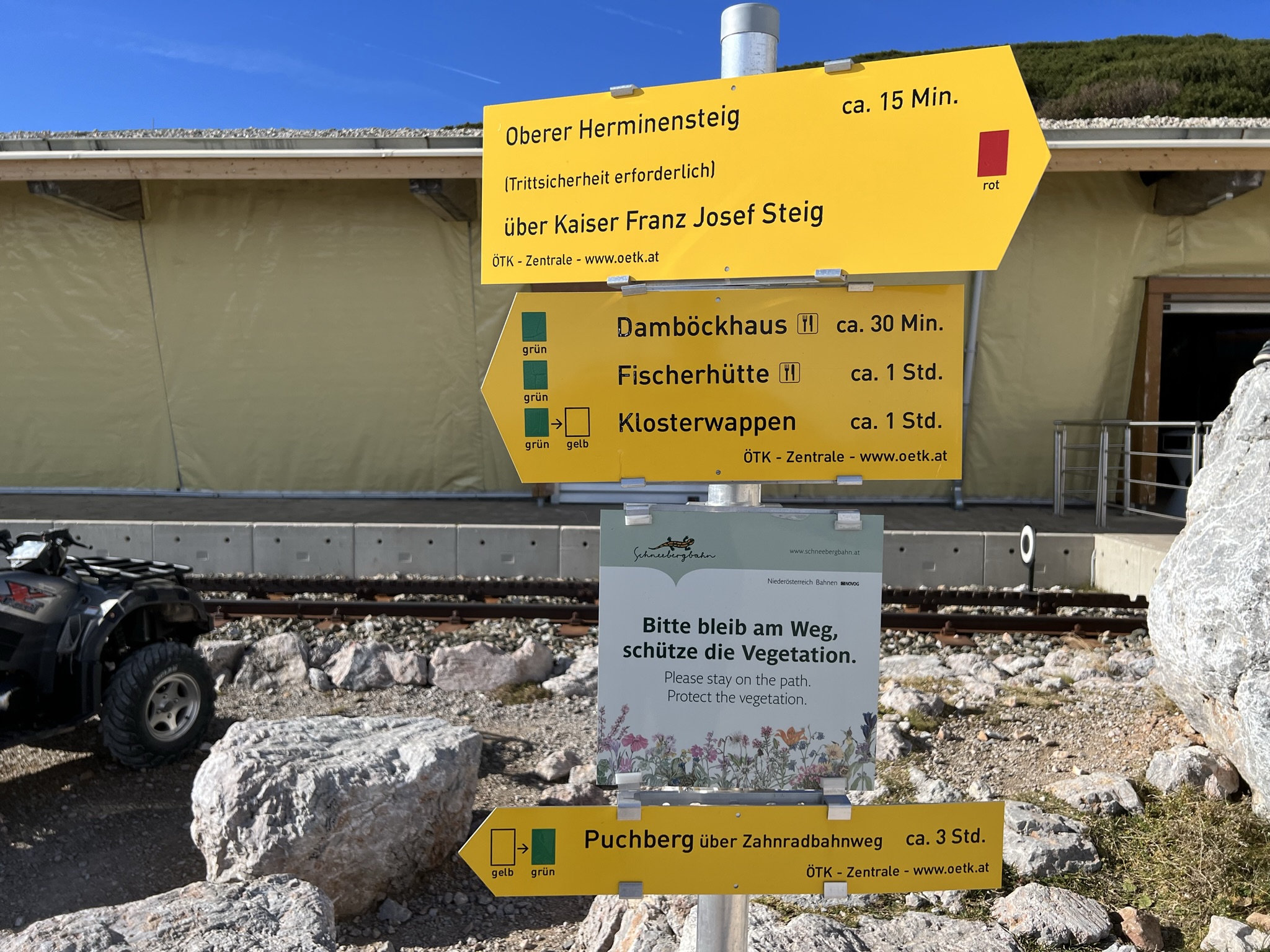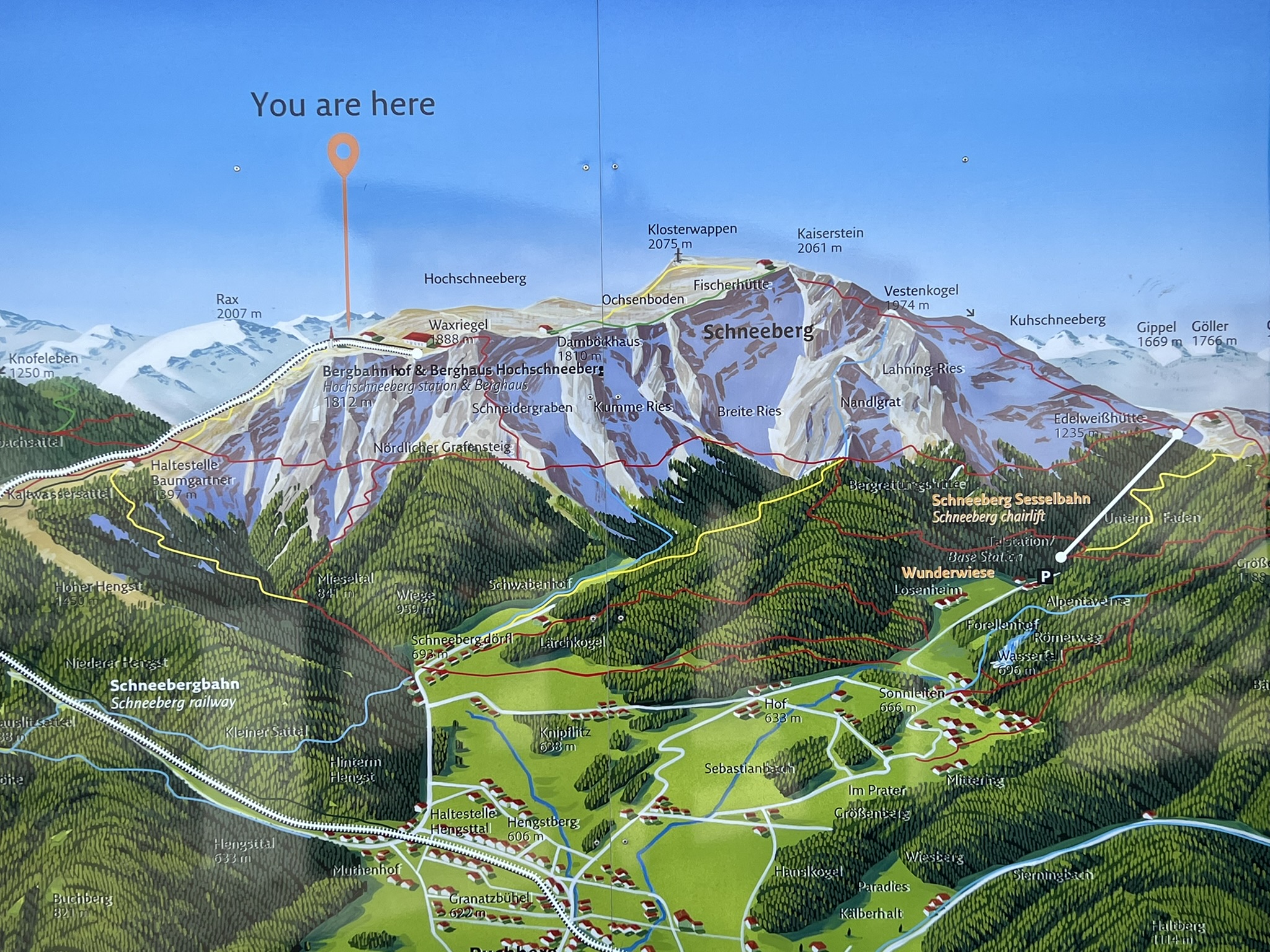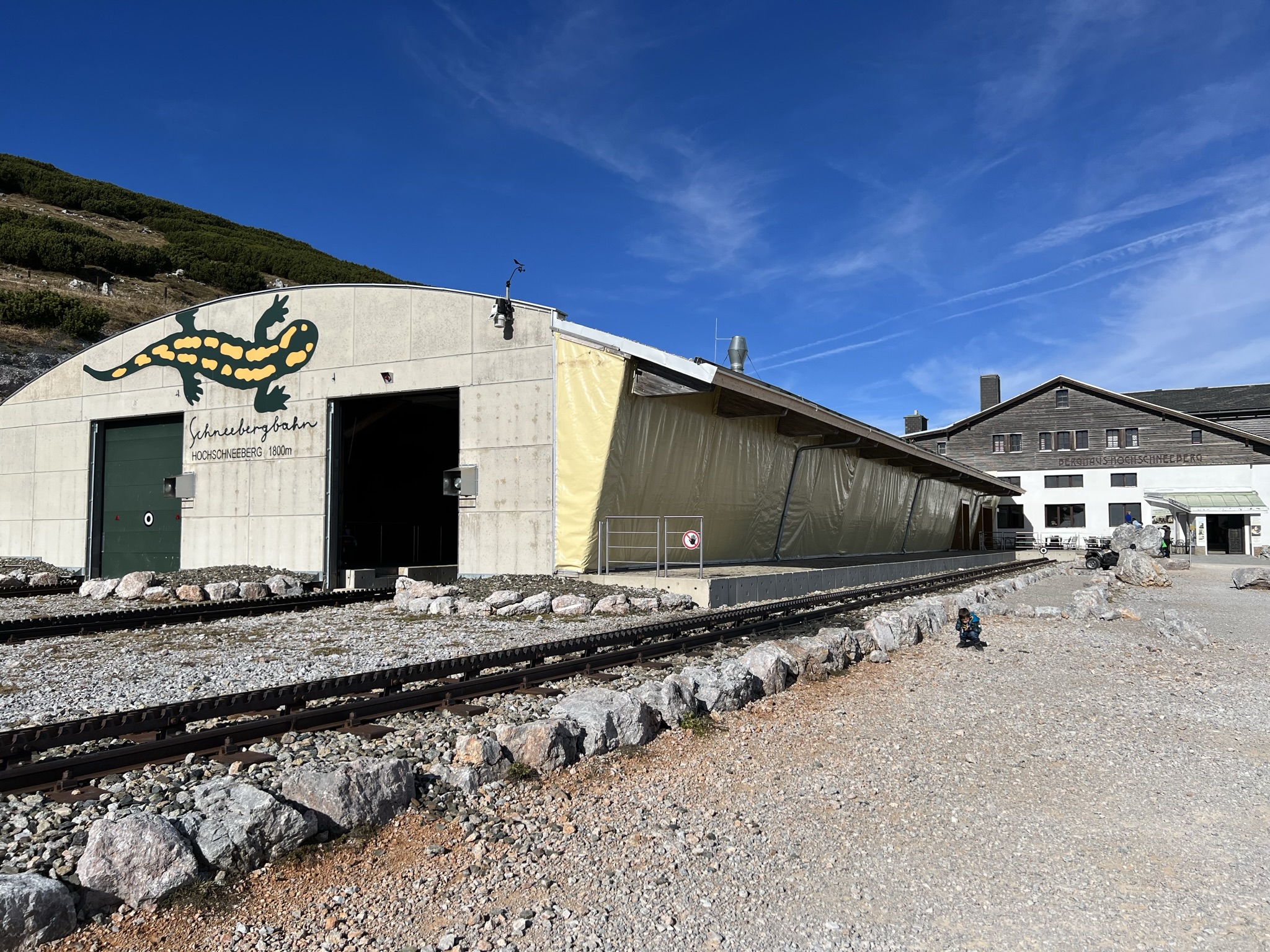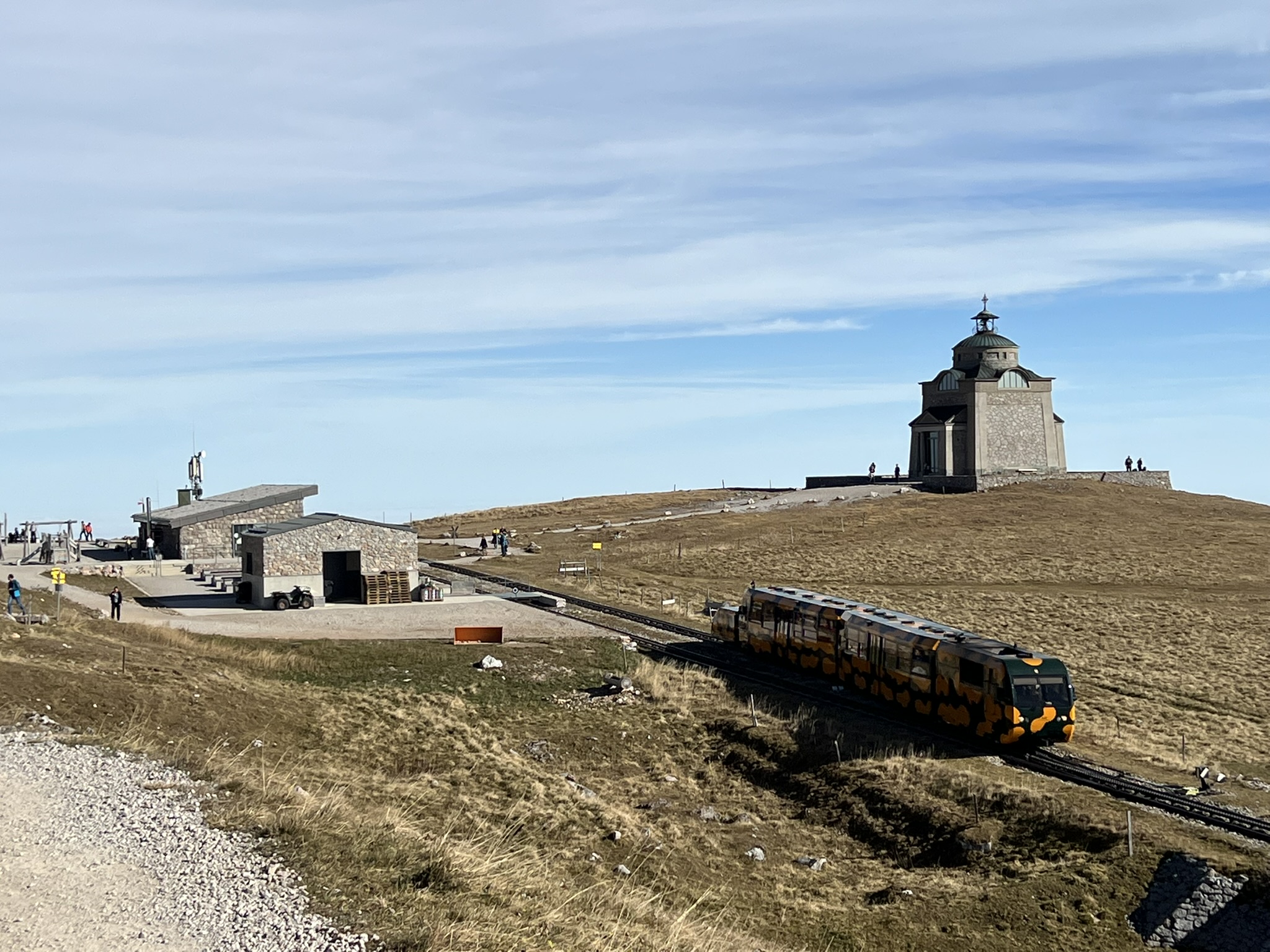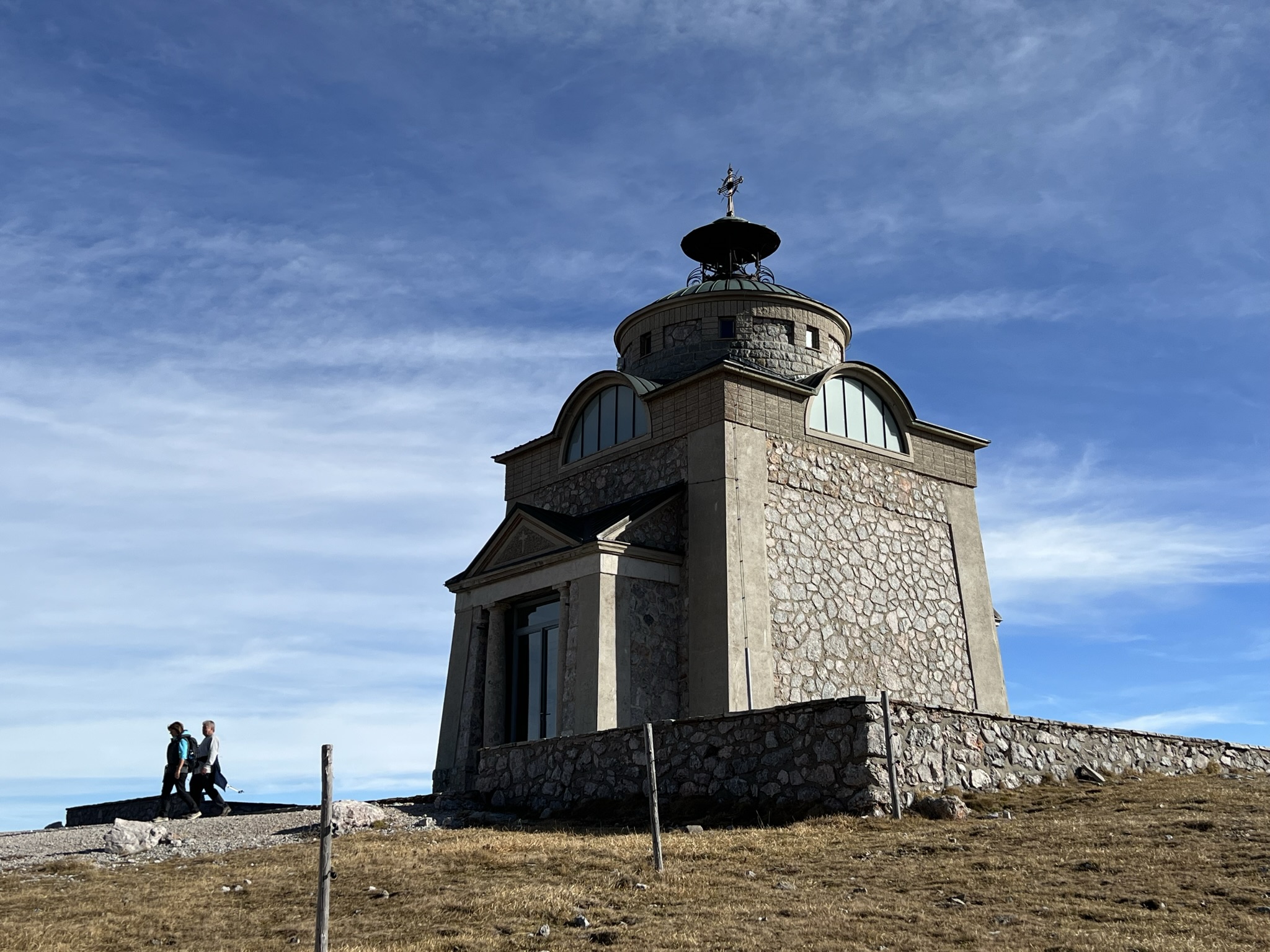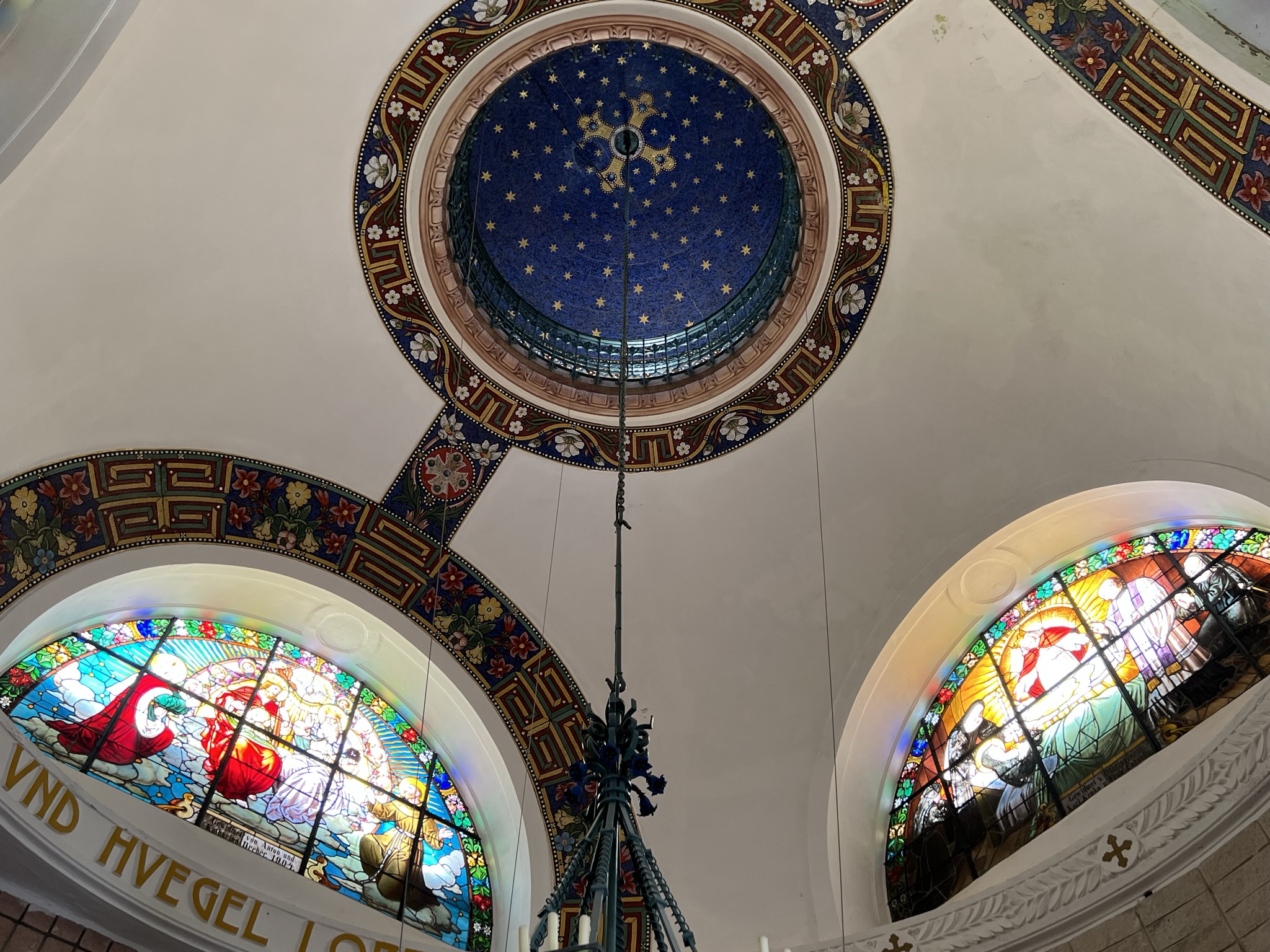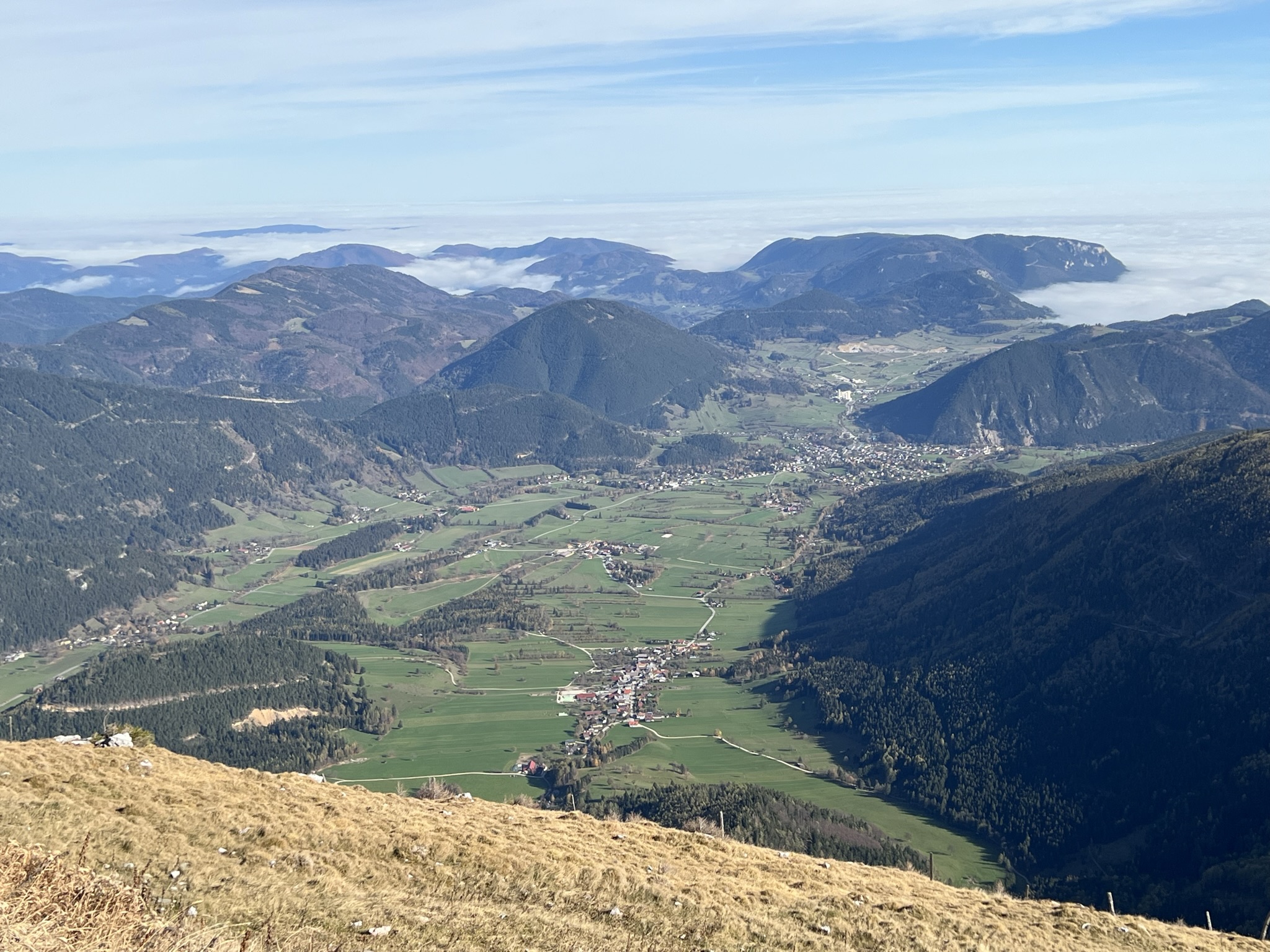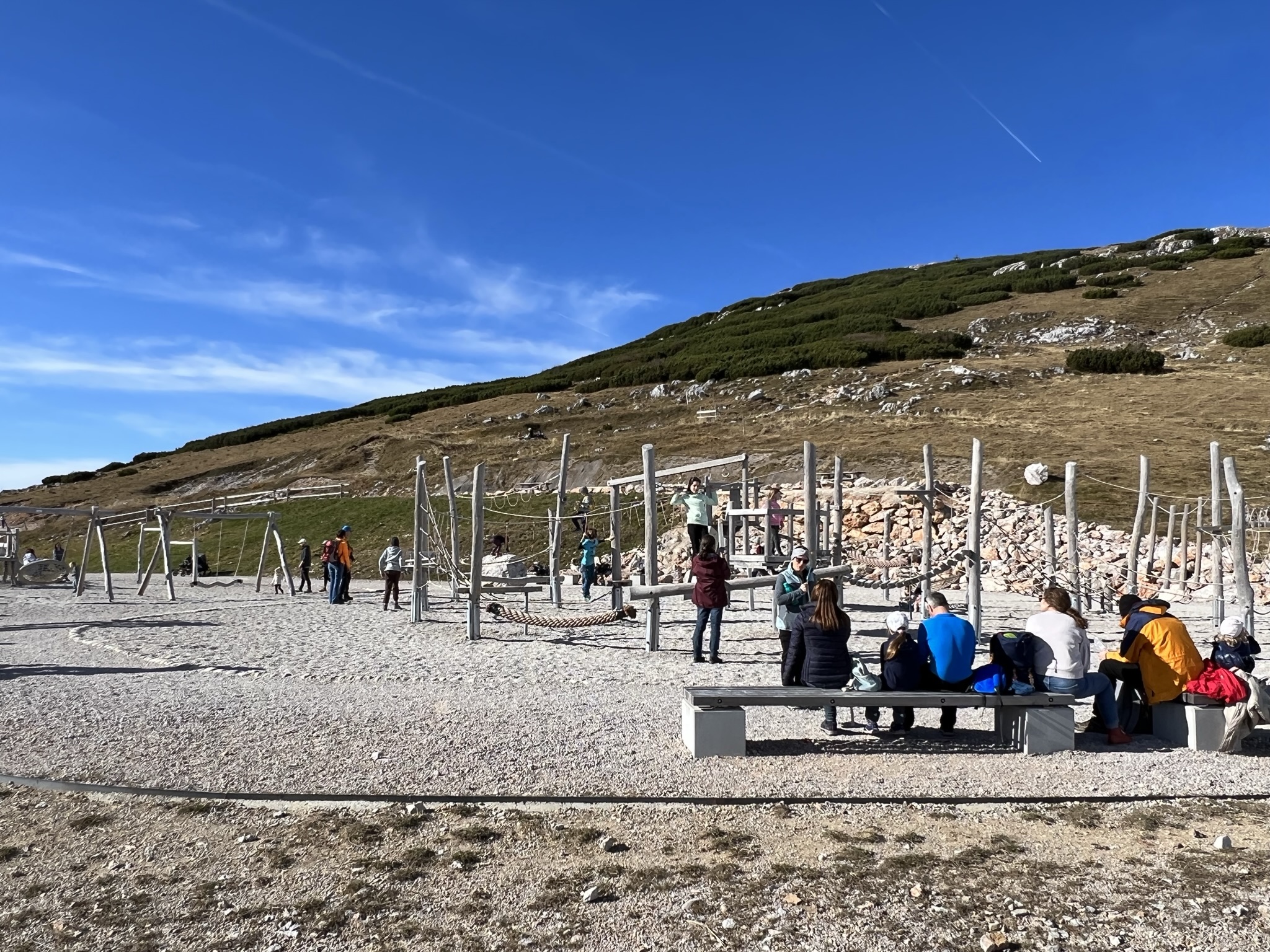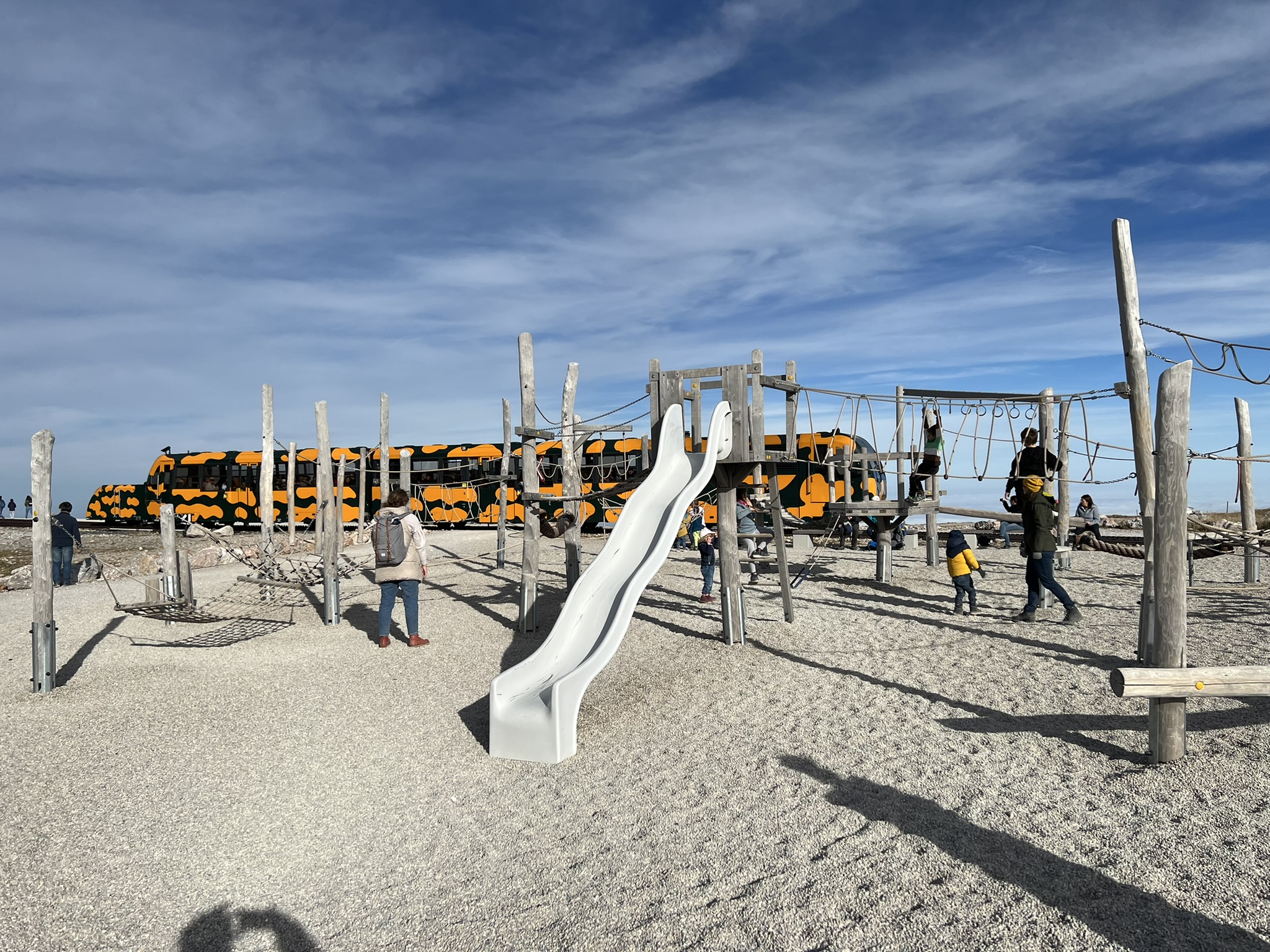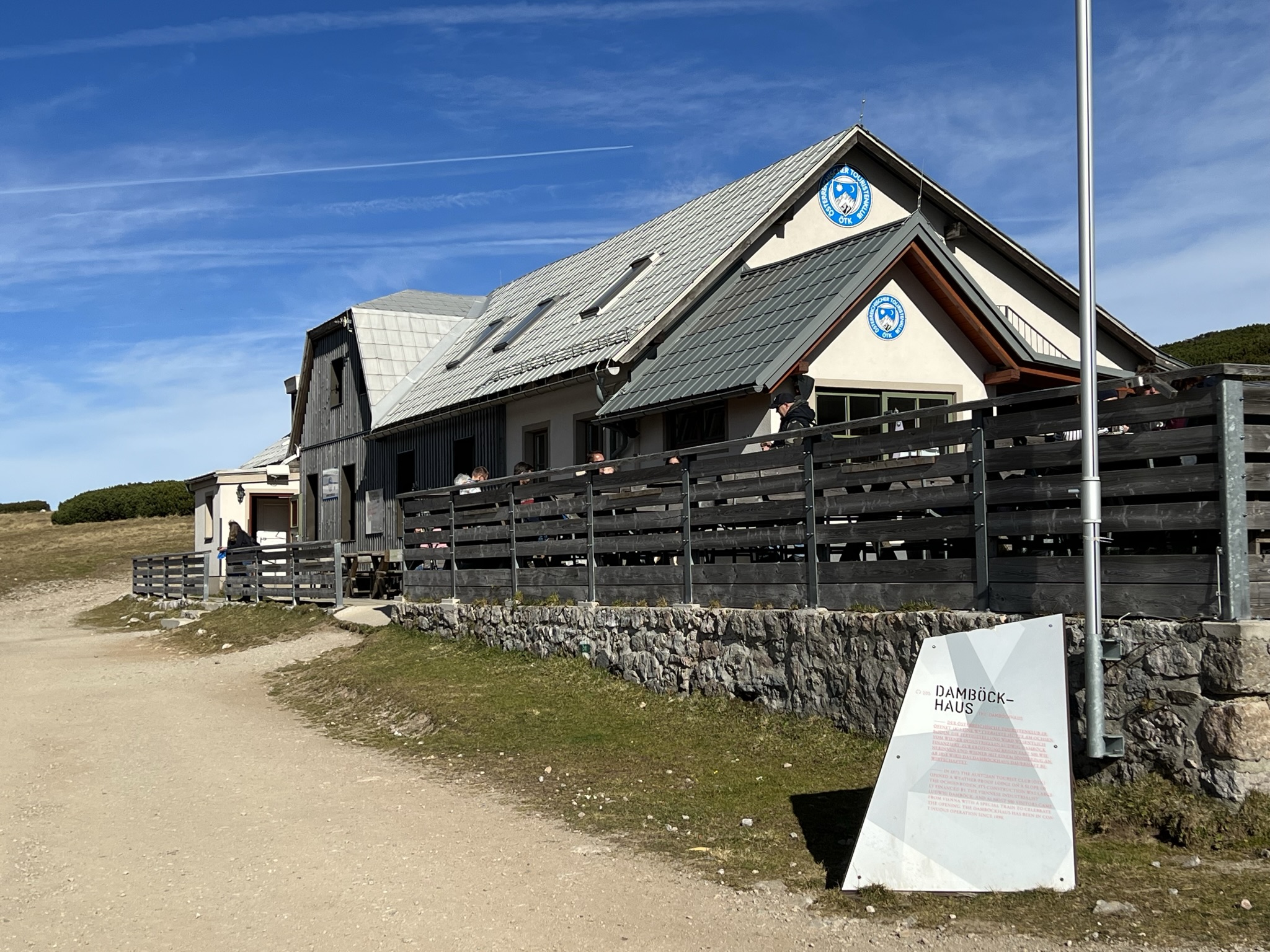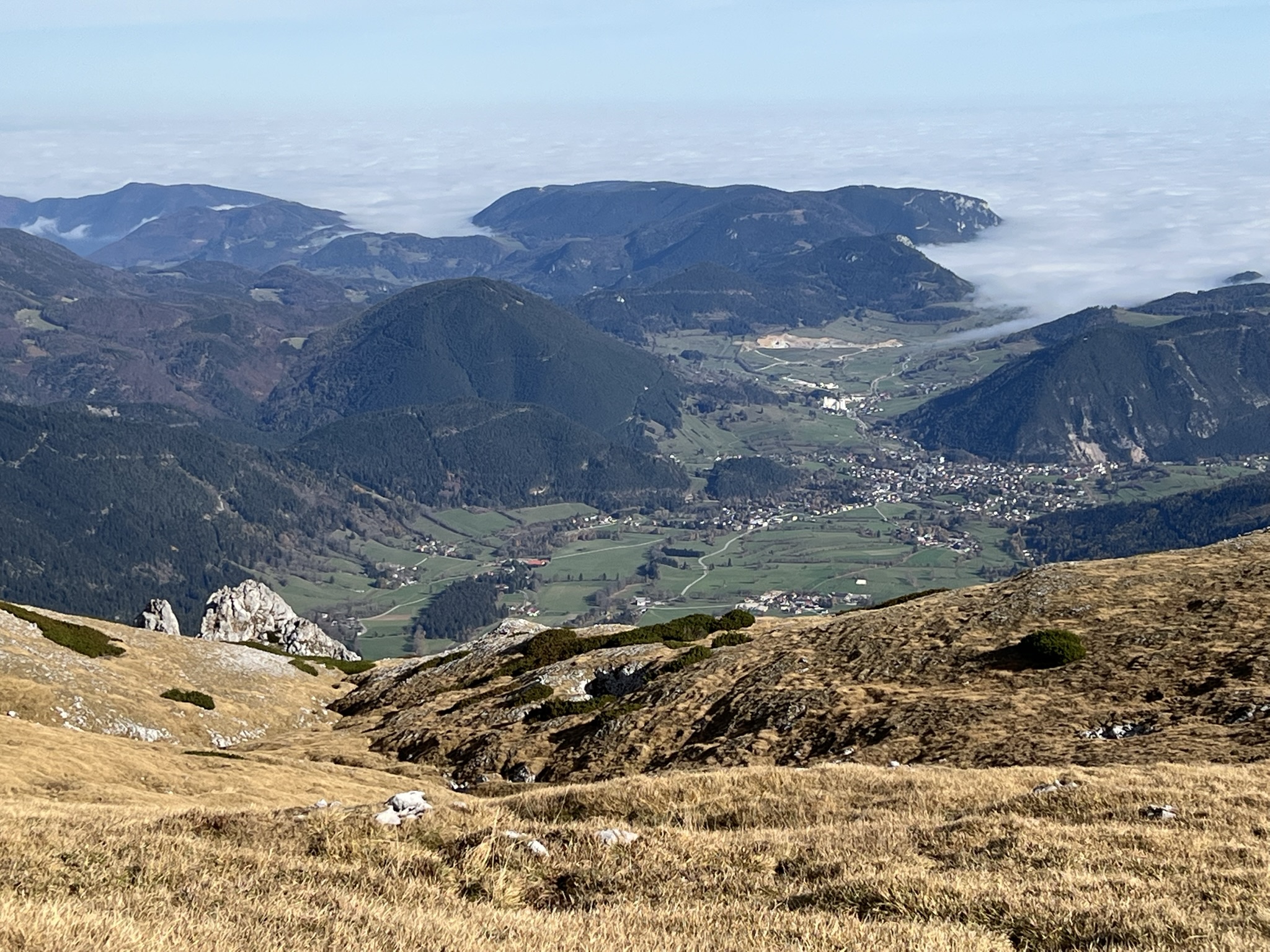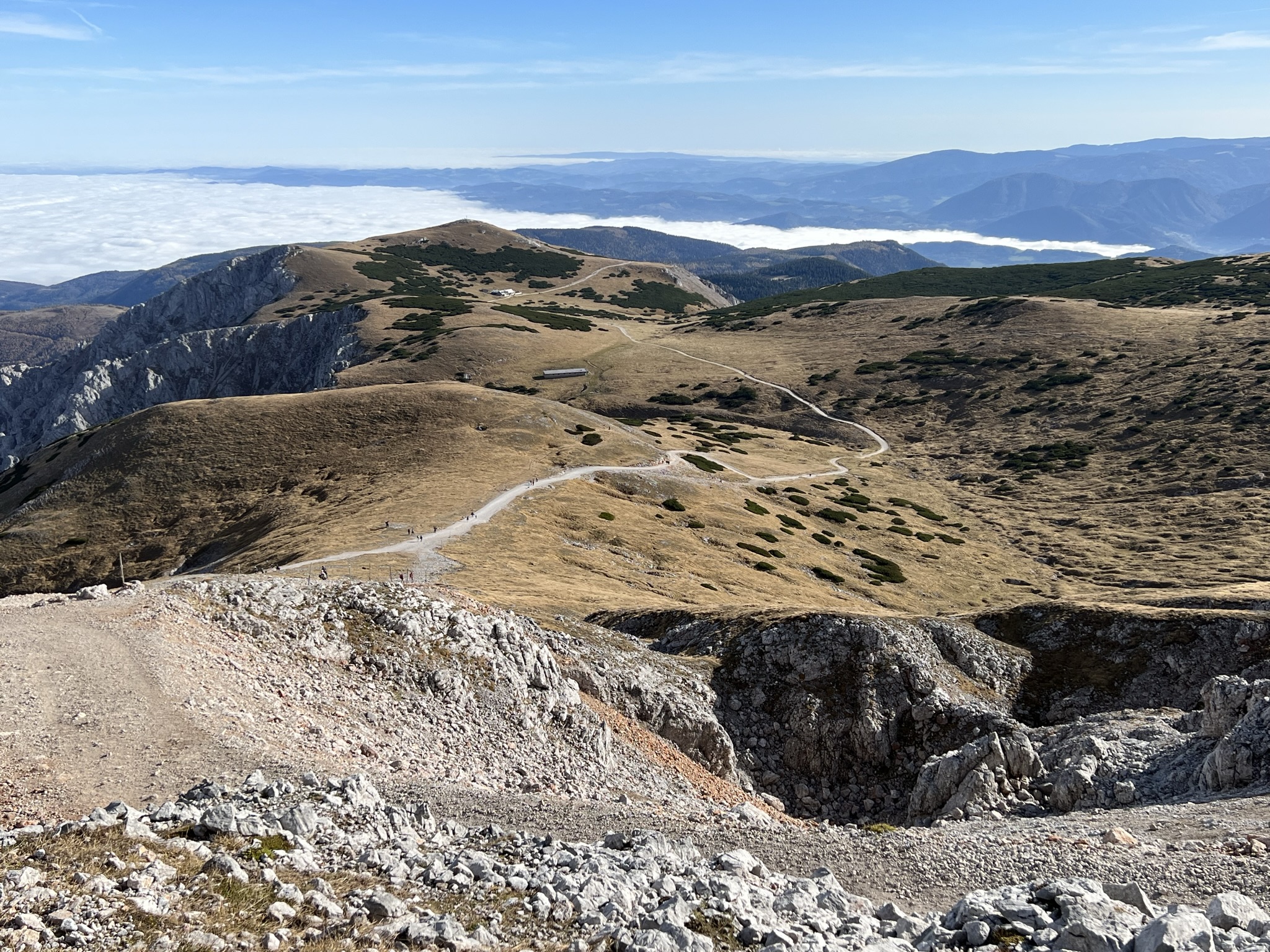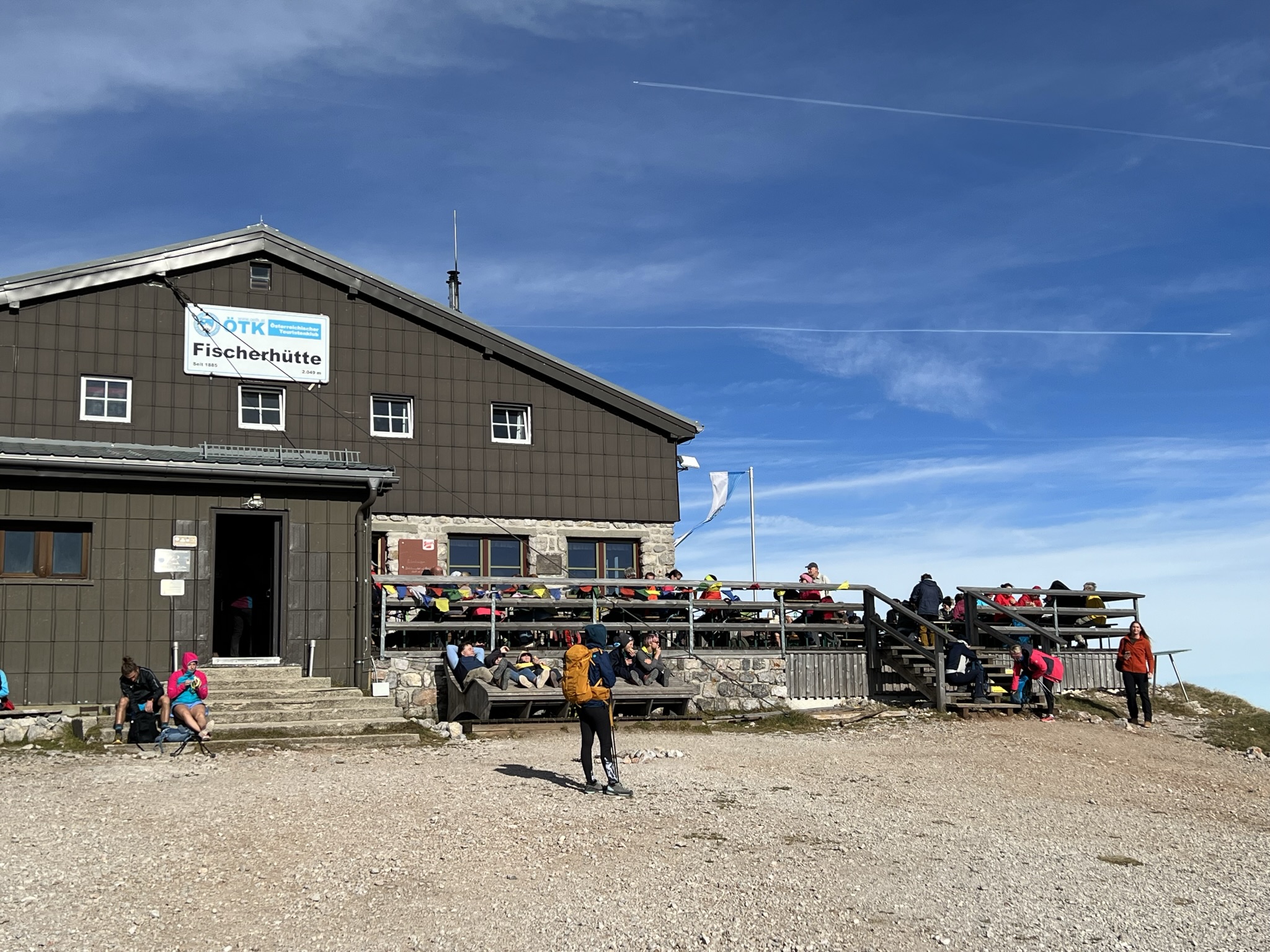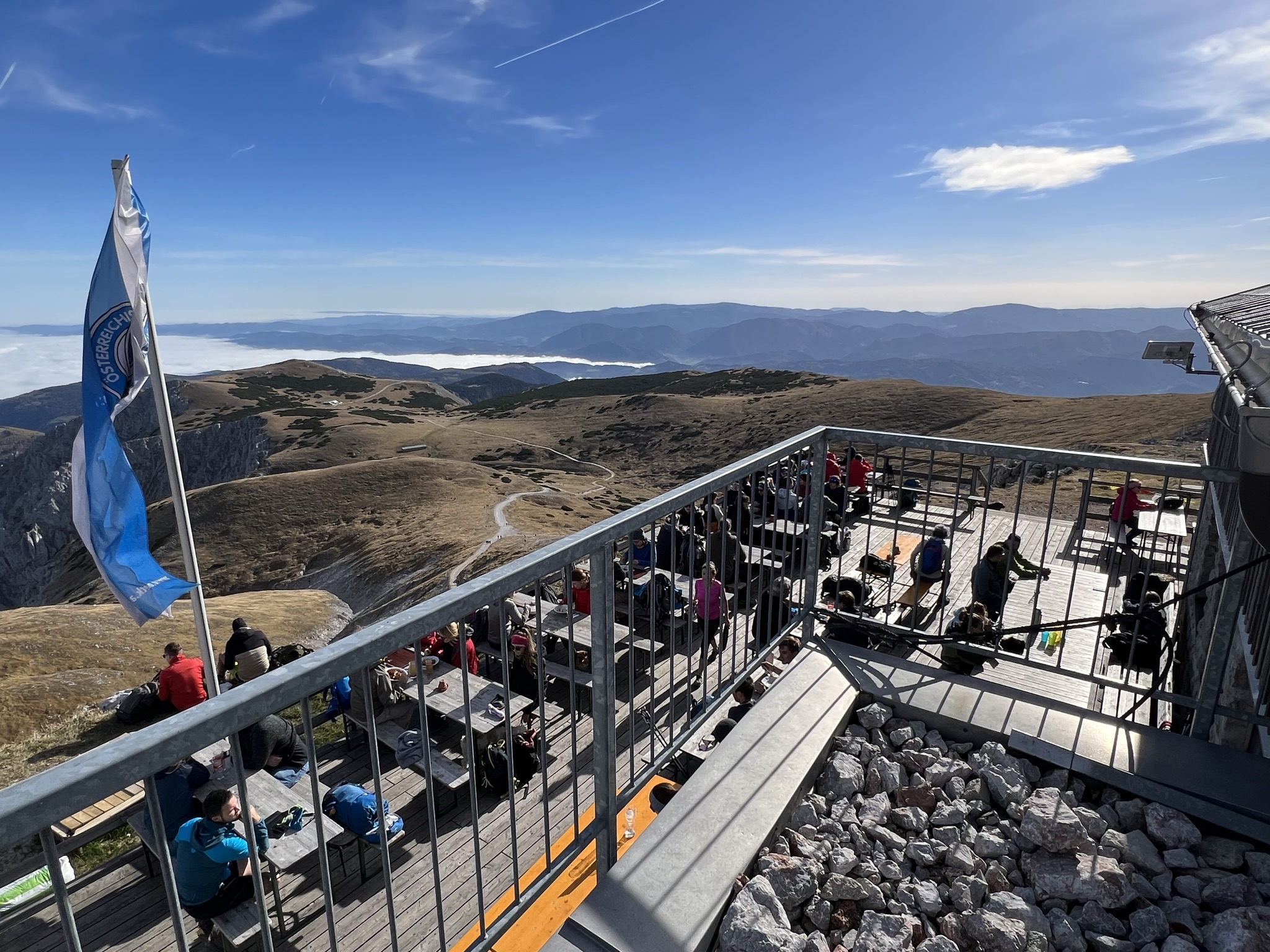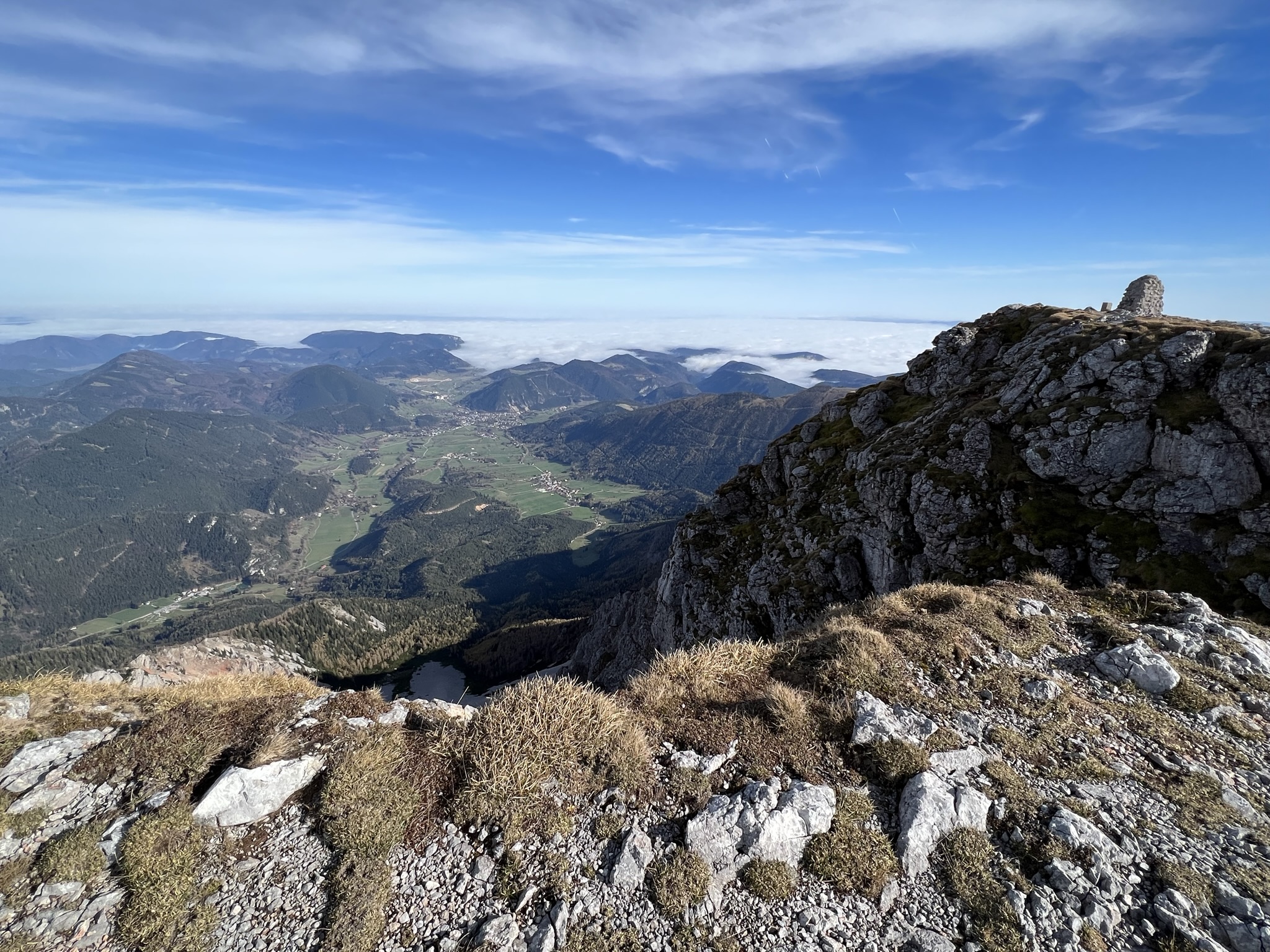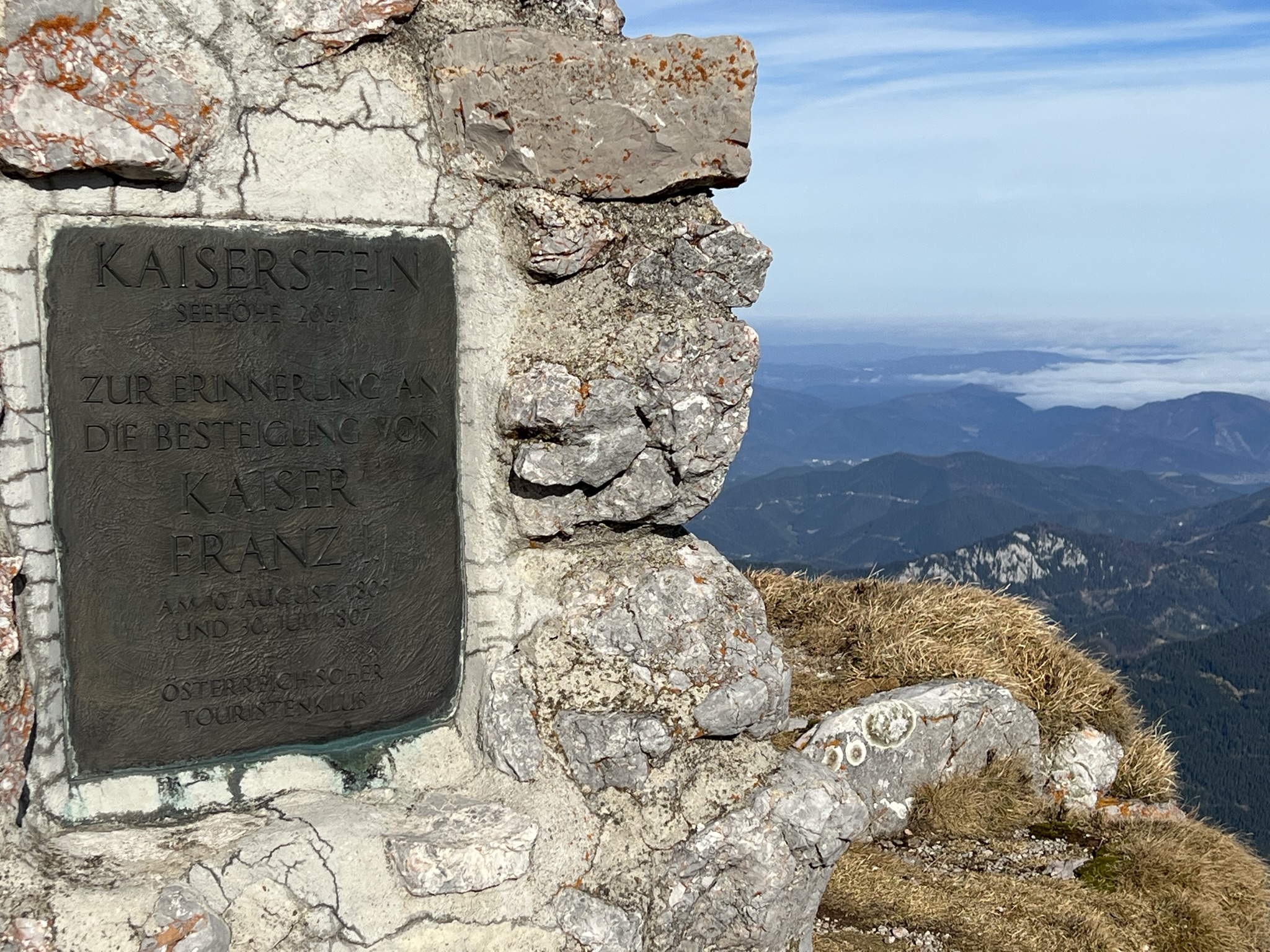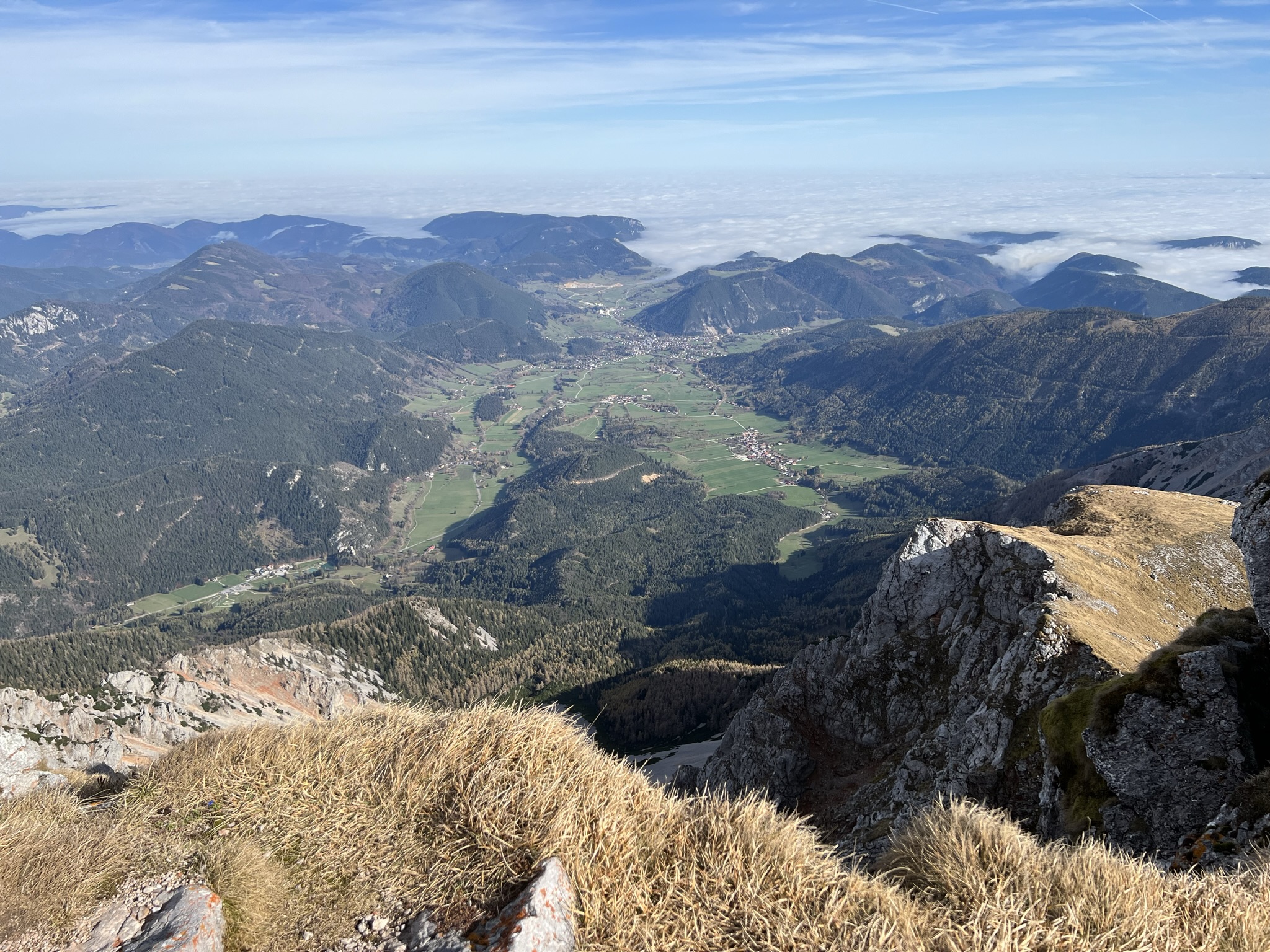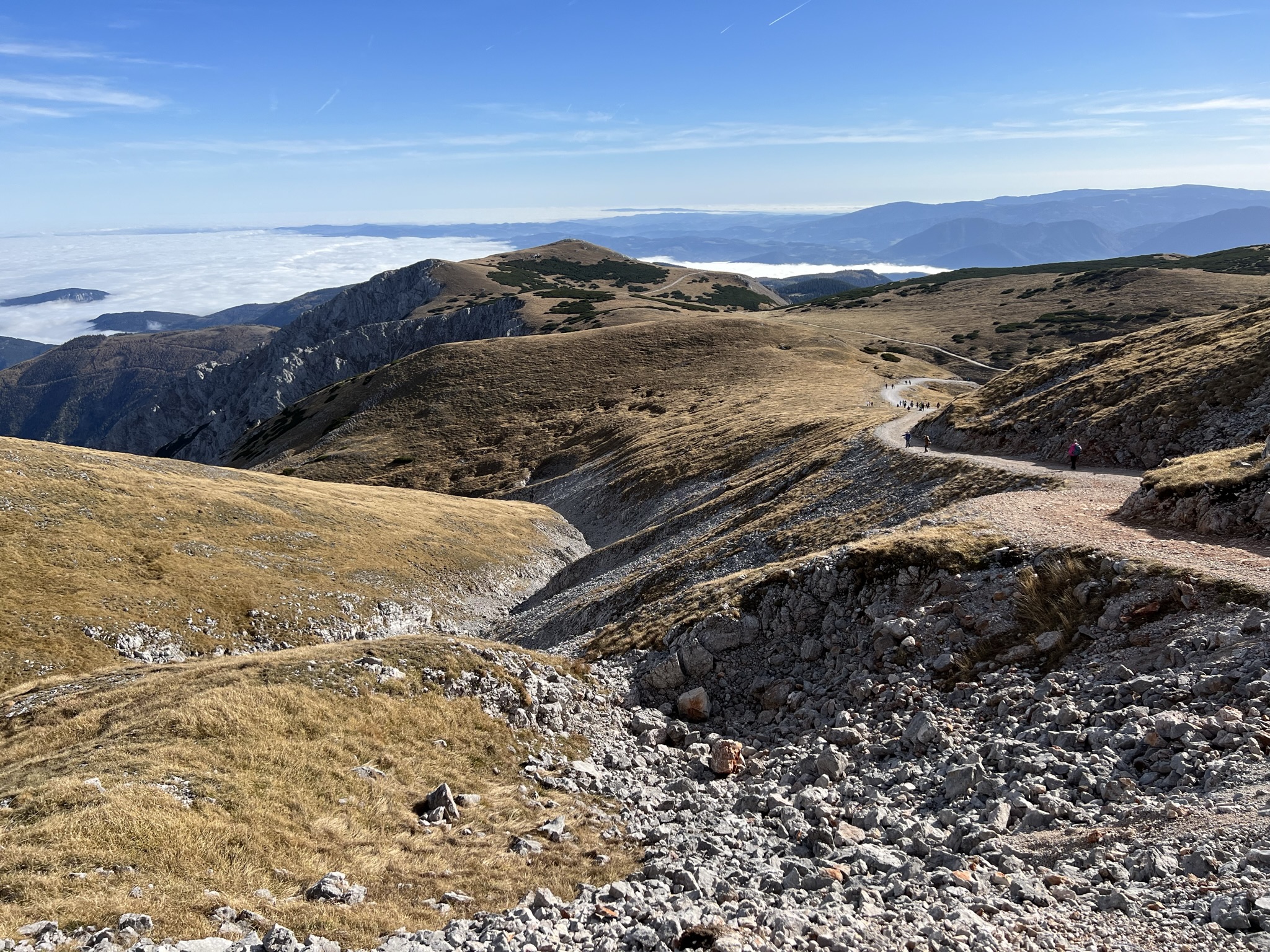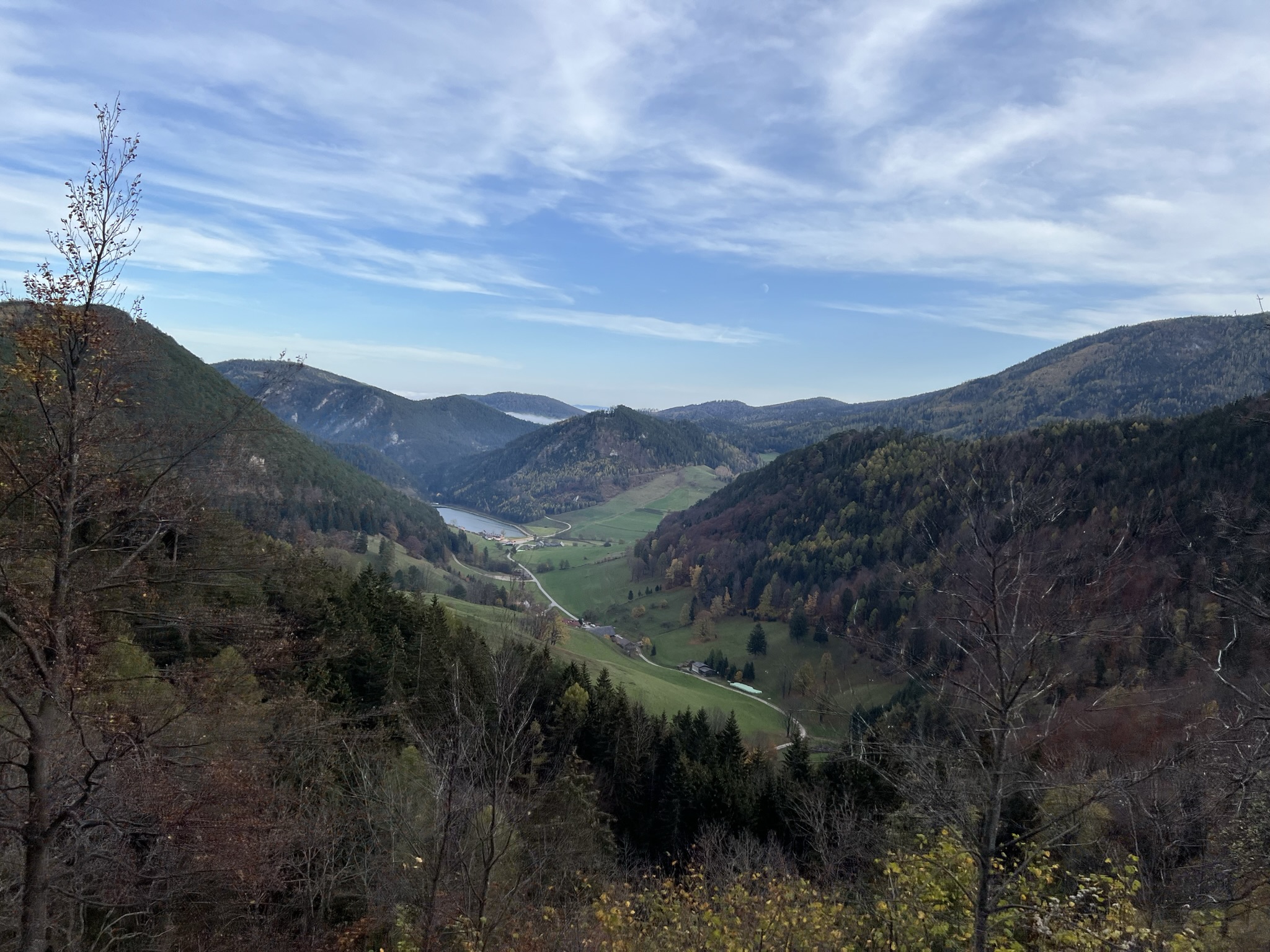Schneeberg and the Schneebergbahn: a mountain railway with history
With its majestic peaks and the historic Schneebergbahn railway, the Schneeberg is a popular destination for tourists and hikers in Austria. The Schneebergbahn, a cog railway that has been in operation for over 120 years, offers breathtaking views of the surrounding landscape during the journey to the summit. At the foot of the mountain, picturesque villages and hiking trails invite you to explore the beauty of this alpine region.
Brief information about the Schneeberg & Schneebergbahn:
- Where is the Schneeberg located? It is a mountain massif of the Rax-Schneeberg group in Lower Austria
- Where is the valley station of the cog railway? Bahnhofplatz 1, 2734 Puchberg am Schneeberg
- How do I get there in public? Daily, hourly with the Südbahn in the direction of Graz to Wiener Neustadt main station. Change there to the next regional train with terminus at Puchberg am Schneeberg.
Tip: There are direct weekend trains to Puchberg from Vienna - How high is the Schneeberg? At 2076 metres, it is the highest mountain in Lower Austria
- How much time should I allow? Day trip
- How much does the Schneebergbahn cost? Here you will find All tariffs. With the Lower Austria Card one journey is free of charge.
- When does the train run? Here you will find the operating hours.
The wonderful view from the Schneeberg was already recognised over 100 years ago. On a clear day, Vienna (65 km as the crow flies) is easily recognisable. Reason enough for Emperor Franz Josephto build the Schneeberg railway in 1897. Since then, the cog railway has run from Puchberg am Schneeberg up to 1796 m.
We park at one of the 4 car parks at the station square to explore the Schneeberg ourselves.
The rack railway (Schneeberg railway)
The Schneebergbahn railway also leaves directly from the station. It is definitely recommended that you buy tickets in advance. The number of seats is limited to 119. It is guaranteed to be full on nice weekends. You also need to plan the descent in advance.
Once you've got your seat, you're ready to go. The Salamanderas the diesel railcar train is known due to its spotted livery, makes it to the top in around 40 minutes. There are several short stops along the way. All trains stop at the middle station ("Baumgartner" stop) to avoid oncoming trains. So if you want to get off to see the famous Schneebergbuchteln you'll have plenty of time to do so. In any case, we treated ourselves to some on both the ascent and descent
We reach the mountain station, the Berghaus Hochschneeberg, on time
Berghaus Hochschneeberg
Here you will find the mountain station of the railway, a small shop, a ticket office, a restaurant and you can even spend the night here.
Just a stone's throw away is the Empress Elisabeth Memorial Churchalso known as the Elisabethkirche or Elisabethkirchlein for short. The church was built by order of Emperor Franz Joseph I in memory of Empress Elisabeth in 1901.
Also at the Berghaus there is a very large children's playgroundwhich is of course also perfect as a waiting stop for the next train.
Hikes on the Schneeberg
More than 80 kilometres of hiking trails and alpine paths lead away from Berghaus Hochschneeberg. This makes the Schneeberg one of the most beautiful hiking areas in Lower Austria. Here you can find e.g:
- Paradise of views (60 min easy walk)
- The plateau hike (7 km) to the summit of the Schneeberg to the Fischerhütte and back to the mountain railway station
- Railway hike along the Schneeberg railway (180 min to Puchberg)
The plateau hike
From Berghaus Hochschneeberg, the trail leads past the Kaiserin Elisabeth Memorial Church and then directly past the children's playground. The family-friendly trail first leads past the Damböckhaus. Food and drink are available here. The gravelled to slightly stony path now meanders further and further along the ridge to the Fischerhütte, where you can also stop for a cosy bite to eat.
If you walk a little further up, an emperor's stone commemorates the ascent of the Schneeberg by Emperor Franz I in 1805 and 1807. You should allow a good hour for the complete tour without breaks.
Tip: We also want to travel down to Puchberg by train, but we still have too much time. Fortunately, we have the idea of changing our tickets. If there are seats available, this is easy to do at the ticket counter upstairs.
Schneeberg and the Schneebergbahn: A Mountain Railway with History
The Schneeberg, with its majestic peaks and the historic Schneebergbahn, is a popular destination for tourists and hikers in Austria. The Schneebergbahn, a cogwheel railway that has been in operation for over 120 years, offers breathtaking views of the surrounding landscape during the ascent to the summit. At the foot of the mountain, picturesque villages and hiking trails invite visitors to explore the beauty of this alpine region.
Quick Facts about Schneeberg & Schneebergbahn:
- Where is Schneeberg located? It's a mountain massif in the Rax-Schneeberg group in Lower Austria.
- Where is the base station of the cogwheel railway? Bahnhofplatz 1, 2734 Puchberg am Schneeberg.
- How can I get there by public transport? Daily, hourly trains on the South Railway direction Graz to the main station Wiener Neustadt. Change to the next regional train with the final destination Puchberg am Schneeberg. Tip: Weekend direct trains are available from Vienna to Puchberg.
- How high is Schneeberg? At 2076 metres, it is the highest mountain in Lower Austria.
- How much time should I plan? A day trip.
- How much does the Schneebergbahn cost? You can find all fares here. With the Lower Austria Card, one ride is free.
- When does the train operate? You can find the operating hours here.
Over 100 years ago, people knew about the beautiful view from the Schneeberg. On clear days, Vienna (65 km as the crow flies) can be clearly seen. This was reason enough for Emperor Franz Joseph Since then, the cogwheel railway has been running from Puchberg am Schneeberg to 1796 m.
The Cogwheel Railway (Schneebergbahn)
Right at the station, the Schneebergbahn departs. It is highly recommended to buy tickets in advance. The number of seats is limited to 119. On beautiful weekends, it is guaranteed to be full. Planning ahead for the descent is also necessary.
Once you've secured your seat, the journey begins. The Salamander, as the diesel railcar train is called due to its spotted paint, takes about 40 minutes to reach the top. Along the way, there are several short stops. All trains stop at the middle station (stop "Baumgartner") to give way to oncoming trains. So, if you want to get off to buy the famous Schneebergbuchtelnyou'll have enough time. We treated ourselves to some on both the ascent and descent.
We reach the mountain station on time, the Berghaus Hochschneeberg.
Berghaus Hochschneeberg
Here is the mountain station of the railway, a small shop, a ticket office, a restaurant, and even accommodations.
Just a stone's throw away is the Empress Elisabeth Memorial Churchalso known as Elisabeth Church or Elisabeth Chapel. The church was built in 1901 by Emperor Franz Joseph I in memory of Empress Elisabeth.
Also near the Berghaus is a very large children's playgroundwhich is of course also perfect as a waiting stop for the next train.
Hiking at Schneeberg
From Berghaus Hochschneeberg, there are more than 80 km of hiking trails and alpine paths. This makes Schneeberg one of the most beautiful hiking areas in Lower Austria. Here are some examples:
- Paradise of Views (60 min easy walk)
- The Plateau Hike (7 km) to the summit of Schneeberg to the Fischerhütte and back to the mountain station
- Railway hike along the Schneebergbahn (180 min to Puchberg)
The Plateau Hike
From Berghaus Hochschneeberg, past the Empress Elisabeth Memorial Church and then directly at the playground. The family-friendly path first leads past the Damböckhaus. Here you can find food and drinks. The gravel to slightly rocky path winds further along the ridge to the Fischerhütte, where you can also take a leisurely break.
If you continue a little further up, a Kaiserstein commemorates Emperor Franz I's ascent of the Schneeberg in 1805 and 1807. For the complete tour, you should plan about an hour without breaks.
Tip: We also want to take the train down to Puchberg, but we still have too much time. Luckily, we have the idea to exchange our tickets. If seats are available, this is easily possible at the ticket counter upstairs.

